By David Alan Johnson
During the early morning hours of October 26, 1942, several hours before the sun came up, Admiral William F. Halsey sent a dispatch consisting of three words: “Attack. Repeat, Attack.” An enemy naval task force had been sighted moving south, toward Guadalcanal in support of a major ground offensive to retake the island of Guadalcanal in late October. Guadalcanal had been assaulted by U.S. Marines in August, and the fight for control of the island was raging.
To support the Army’s offensive and to find and destroy American naval forces in the vicinity, the Japanese moved into position near the southern Solomon Islands. Admiral Halsey wanted his own aircraft carriers to attack the enemy before they could get within striking range of the island.
Halsey’s Three Groups
Halsey had landed at Noumea, New Caledonia, eight days earlier to replace his friend Admiral Robert Ghormley as commander of all U.S. forces in the South Pacific area (Comsopac). Admiral Ghormley was a meticulous man with a talent for organization. But he apparently lacked the aggressiveness and the personal qualities to inspire the men under him. The appointment of Halsey as Comsopac was hoped to remedy that situation. Halsey’s first communiqué to his men was certainly grounds for encouragement.
Admiral Halsey felt the pressure and knew what was expected of him. He told Admiral Chester W. Nimitz, his superior and commander in chief of the Pacific Fleet, “I had to begin throwing punches almost immediately.” He also knew what forces he had at his disposal that would be throwing the punches: two aircraft carriers, two battleships, nine cruisers, and 24 destroyers. These were organized into three groups, two of which were led by the aircraft carriers Enterprise (Task Force 16) and Hornet (Task Force 17). The battleship-cruiser group was designated Task Force 64. Halsey gave the commanders of the three groups instructions to make a sweep north of the Santa Cruz Islands north of New Caledonia, then change course to the southwest to be in position to intercept enemy forces approaching Guadalcanal.
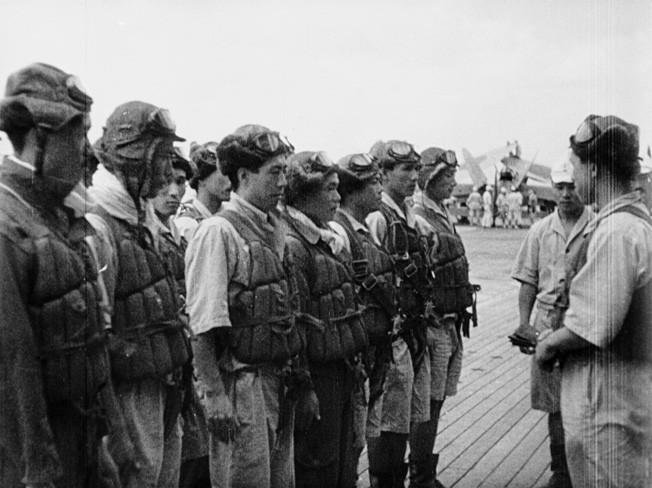
Admiral Isoroku Yamamoto, aboard his flagship Yamato in Truk lagoon, was concerned about the aggressiveness of his subordinates as well. His Vanguard Group, made up of two battleships, four cruisers, and several destroyers, had been milling about Guadalcanal for nearly two weeks. The cruisers and battleships were supposed to support the attack on the island’s vital airfield, Henderson Field, with massive gunfire, but the island and its airfield were still solidly in American hands. Yamamoto advised the Army that if Henderson Field was not taken soon, his ships would have to withdraw because of lack of fuel.
Yamamoto was also frustrated by the fact that he had no idea where the American carrier forces were. Enterprise had been spotted by a patrol plane a few days before, but no enemy carriers had been seen since then. Admiral Chuicho Nagumo, commander of the carrier strike force consisting of the fleet carriers Shokaku, Zuikaku, and the light carrier Zuiho, continued to stand by in the waters north of Guadalcanal and wait for news. About 100 miles to the west, Carrier Division 2, formed around the carrier Junyo, also waited for word.
Knocking Out Zuiho
American scouting planes were having much better luck than Yamamoto’s. A relay of Consolidated PBY Catalina flying boats had been keeping track of the Japanese fleet since noon on the 25th. Admiral Thomas C. Kinkaid, in command of Task Force 16, complied with Halsey’s directive by keeping to an aggressive northwesterly course at about 20 knots. One of the Catalinas reported the Japanese fleet to the northwest. About an hour later, another flying boat reported one large carrier and six other ships about 200 miles away on the same heading.
At 5 am, Admiral Kinkaid ordered Enterprise’s captain, Osborne B. Hardison, to launch a 200-mile search for the Japanese carrier force. Sixteen Douglas SBD Dauntless dive-bombers left Enterprise to look for the enemy. Each aircraft carried a 500-pound bomb “just in case.” On the way out, one of the bombers spotted a Japanese Nakajima “Kate” torpedo bomber heading in the opposite direction—looking for the American carriers.
The 16 SBDs split up in pairs, with each pair covering a wedge-shaped sector ranging from west-southwest to due north. At 10 minutes before 7 am, Lt. Cmdr. James R. Lee, leading Enterprise’s Scouting 10, and his wingman, Ensign William E. Johnson, made contact. They had found Shokaku and Zuikaku, the heart of the Japanese force. As soon as Admiral Kinkaid received the message, he ordered an immediate increase in speed.
Other SBD pilots intercepted the message as well. Lieutenant Stockton Strong and his wingman, Ensign Charles Irvine, on another leg of the search, turned toward the position indicated by Commander Lee and found the Japanese task force at 7:30. Strong spotted two narrow, light-brown flight decks far below—Shokaku and Zuiho. Zuikaku was only a few miles away and would have been within visual range, but she was hidden by cloud cover.
The two SBD pilots realized that they had just enough fuel to make one attack. Zuiho was the nearest carrier. Both pilots split their diving flaps and rolled their SBDs into steep dives toward the flight deck that expanded in their bomb sights. At about 1,500 feet, they released their bombs and pulled out of their dives. Both bombs hit their targets. A 50-foot crater was opened in the flight deck aft, knocking the carrier out of the battle just as it began. When Strong and Irvine landed aboard Enterprise two hours later, they had just enough fuel to make it back to the ship.
The Air Battle Begins
All of Enterprise’s search planes made it back safely. But Stone and Irvine had something else to report. Zuiho’s flight deck had been empty when they made their attack, meaning that her air group had already been launched. Japanese search planes, including the Kate spotted by Enterprise’s scouts, had discovered Hornet and her group at about 7:30. Shokaku, Zuikaku, and Zuiho had sent a 65-plane strike at about 8:15. These carriers were also preparing a second strike of 44 planes. Thanks to Strong and Irvine, Zuiho had already withdrawn, escorted by two destroyers.
The American carriers did not launch their first strike until about 8:30, when Enterprise and Hornet sent a total of 73 aircraft. Most of the planes were from Hornet; Enterprise contributed nine Grumman TBF Avenger torpedo planes, three SBDs armed with long 1,000-pound bombs, and an escort of eight Grumman F4F Wildcat fighters. The rest of Enterprise’s SBDs were either just returning from the morning’s scouting duties or were on antisubmarine patrol.
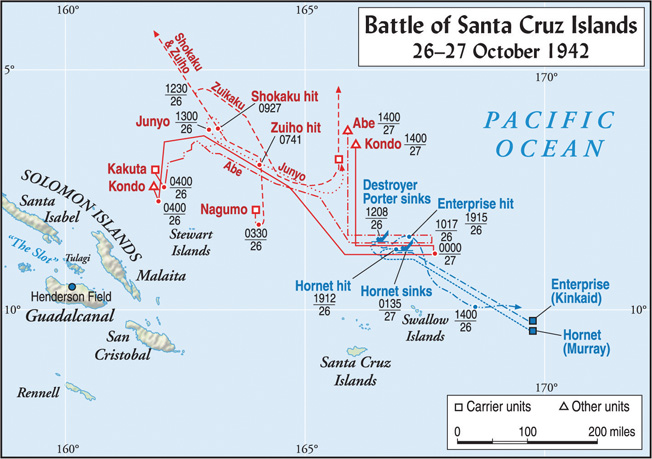
The American air groups had flown about 60 miles and were still climbing when Nagumo’s first strike passed overhead, flying in the opposite direction. At 8:40, nine “Zero” fighters from Zuiho dove at the strike force from Enterprise. Because fuel was being conserved for the estimated 200-mile flight to the enemy, the strike groups just flew straight toward the enemy and did not spend the time and gasoline to form up into a unit. Instead, the flights from Enterprise and Hornet proceeded individually and were strung out over a distance of several miles. This lack of formation made things much easier for the attacking Zeroes.
The Japanese fighters attacked the Avengers from Enterprise with 20mm cannon and 7.7mm machine guns. Diving out of the sun, the Zeroes immediately shot down two of the unsuspecting Avengers and damaged two others so badly that they had to turn back. After their first run, the Zeroes turned back and shot down two Wildcats and damaged another, forcing it to return to Enterprise with the two shot-up TBFs.
The air battle was not one-sided. Gunners aboard the TBFs shot down three of the attacking Zeroes. Lt. Cmdr. James Flatley, leader of Enterprise’s Fighting 10, shot another Zero into the sea, and the surviving Wildcats accounted for two more. The remaining Japanese fighters had run out of ammunition and turned back, leaving the first Japanese strike with an escort of only 12 Zeroes.
Defense of the US Fleet
Each task group commander had surrounded his precious flight decks with supporting battleships and cruisers, each carrying a formidable number of antiaircraft guns, and covered them with combat air patrols (CAP) of circling fighters to take care of any attackers that broke through the withering antiaircraft barrage. Nerves were tense, fingers rested lightly on triggers, and eyes scanned the sky for dark specks of approaching enemy aircraft.
The Japanese air strike was the first to arrive, since it was also the first launched. Radar operators aboard the American ships made contact with the approaching aircraft at 8:40, but had difficulties in separating friend from foe as the outgoing American groups and incoming Japanese strike were too close together and on a reciprocal course. First verification was not received until 8:57, when the enemy were only 45 miles out on a bearing of 280 degrees. Two minutes later, Wildcat pilots of the CAP spotted Aichi “Val” dive-bombers at 17,000 feet making directly for the American task force.
Japanese pilots spotted Hornet at about 8:55, but Enterprise was hidden by a rain squall 10 miles to the northeast. Enterprise had a reputation for being a lucky ship; her good luck would not desert her on this particular day. Hornet’s fighter director did his best to place the 37 Wildcats of the CAP directly in the path of the enemy, but they found themselves below the incoming strike. The fighters were too close to the task group—at 22,000 feet and only 10 miles out—and too far out of position to be of much use in defending Hornet.
Hornet’s captain, Charles P. Mason, ordered a change of course, attempting to get out of the way of the incoming attack, and increased speed to 31 knots. The cruisers Pensacola and Northampton steamed just ahead, while the light cruisers San Juan and Juneau followed along on the carrier’s quarters. Six escorting destroyers tried to be everywhere at once. All of these ships kept pace with Hornet as her rudder was put over hard, spoiling the aim of the Val pilots.
Gunners aboard Hornet and her escorts put up an antiaircraft barrage that was truly murderous. The sky above the carrier went black with the smoke from exploding shells. The first two Vals dropped their bombs at fairly low altitude, but both missed, exploding off the starboard side, adjacent the carrier’s island. The two dive-bombers that dropped them followed their bombs into the sea, riddled by antiaircraft fire. But there were too many of them. Captain Mason estimated that 27 aircraft attacked his ship, and they were flown by determined, veteran pilots. The gunners had no chance of shooting down every dive-bomber.
Three Bombs, Two Torpedoes, and Two Kamikaze
At 9:12, Hornet was hit by a 550-pound bomb just abreast of the island, almost dead center of the flight deck. The bomb passed through the hangar deck and exploded in the space below. A few moments later, two more bombs hit between the aft elevator and amidships. One exploded on the third deck; the other blew a 7-by-11-foot hole in the flight deck and killed the crews of adjacent antiaircraft batteries. At 9:14, the Japanese squadron commander deliberately flew his crippled Val into Hornet’s island, which instantly covered the signal bridge with a blanket of burning gasoline. What remained of the Val and its crew, complete with 550-pound bomb, ended its journey in Hornet’s gallery deck, where it started a small but intense fire. All of this happened within the space of about five minutes.
To make matters even worse, torpedo-carrying Kates began their attacks. Actually, they were not supposed to begin their runs until after the Vals made their drops and left the area, but this lack of coordination came as cold comfort to Hornet and her crew. Two torpedoes hit the carrier on her starboard side at 9:15, about 20 seconds apart. The first hit the engine room, opening a four-foot hole below the water line; the second exploded against the starboard quarter, where the watertight compartments prevented any major damage.
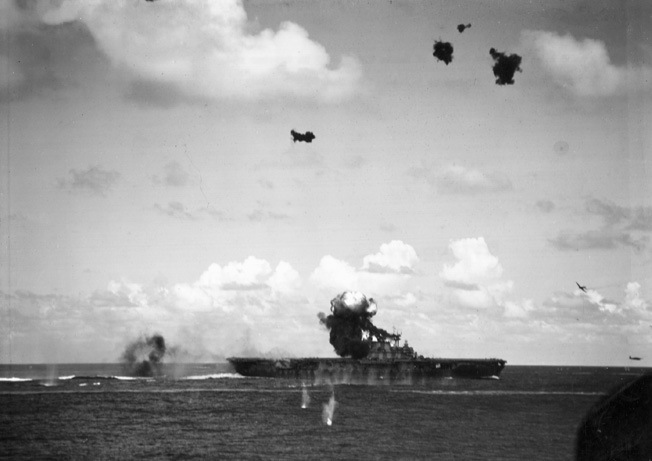
Toward the end of the attack, Hornet became the victim of a second suicide pilot. Two accounts of this attack exist. The first claims that a Kate came in from astern, crashed just below the forward port gun gallery, and came to rest at the base of the forward elevator pit. The other states that the Kate made its suicide run from dead ahead, crashed into the port gun gallery, and blew up near the forward elevator shaft. Both accounts agree that Hornet’s forward elevator was put out of action by the explosion.
At 9:25, the attack finally ended. Men blinked, shook their heads, and took a deep breath. After all the noise, the sudden silence seemed unreal. The firing and explosions seemed to have gone on forever, but it had been only 15 minutes since the antiaircraft fire began.
Hornet was badly damaged during those 15 minutes. She was on fire and dead in the water, with an eight-degree list to starboard. All power had also been knocked out, which meant that the fire pumps were not able to keep the fires from spreading, much less put them out. But damage control, under Commander Edward P. Creehan, went to work to bring the ship back on an even keel and used hand pumps and fire extinguishers to keep the fires at bay.
The Japanese air groups suffered heavily from both antiaircraft fire and fighters as 38 of the 53 attacking aircraft had been destroyed. Sixteen out of 20 Kates had been shot down, along with 17 of 21 Vals and five of the 12 Zeroes. If the CAP had been positioned properly, even more of the attackers would have been destroyed and Hornet probably would not have been as badly mauled. The fighters shot down most of the Vals after they dropped their bombs.
The SBDs Strike the Shokaku
Just as Hornet was being savaged by Admiral Nagumo’s aircraft, Hornet’s pilots were preparing to return the compliment. Her first strike group of 15 SBDs and four Wildcats, led by Lt. Cmdr. William “Gus” Widhelm, sighted the Japanese carriers at about 9:15. Fourteen Zeroes of the CAP intercepted the attackers, while Widhelm was busy broadcasting several sighting reports to Hornet and Enterprise and to the TBF torpedo planes approaching the target area.
The Wildcat pilots managed to keep the Zeroes from interfering with the dive-bombers, while the SBDs helped their own cause by defending themselves. When the Zero pilots attacked the SBDs, they had a very nasty surprise in store: the dive-bombers were armed with twin .30-caliber machine guns, and their rear gunners knew how to use them. Attacking Japanese fighters found themselves confronting a stream of .30-caliber machine-gun fire. One of the Zero pilots managed to hit Widhelm’s engine, but Widhelm kept on course until his engine stopped running. He spiralled down to make a water landing, inflated his rubber raft, and, after the SBD sank, sat up and watched the battle with his rear gunner.
They certainly had quite a performance to see. The remaining SBDs, now under Lieutenant James Vose, pushed their way past the Zeroes until they were directly over Shokaku, the nearest carrier. From 12,000 feet the pilots could see smoke coming out of the two holes of nearby Zuiho’s flight deck. Eleven dive- bombers pushed over into steep dives and did not release their 1,000-pound bombs until they were only 600 to 900 feet above their target.
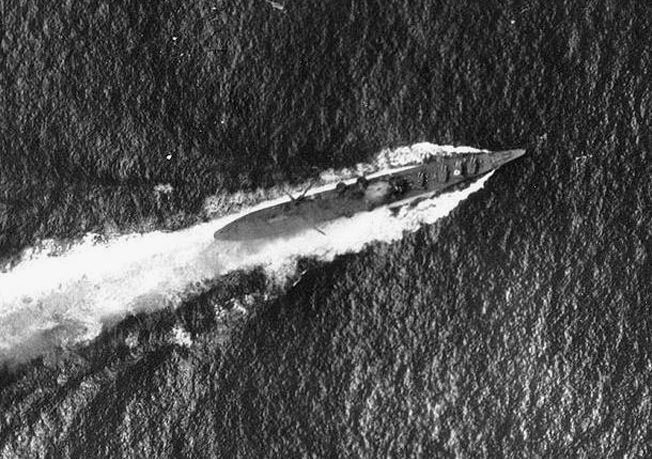
Widhelm claimed to have seen the carrier hit by six bombs. Lieutenant Vose claimed four hits. Japanese reports vary, mentioning between three and six hits. Shokaku’s flight deck now resembled the surface of the moon. From her midships elevator to the stern, the deck was a series of ragged, smoking craters. The hangar deck below was in ruins, and all antiaircraft batteries on the after part of the flight deck had been put out of action.
Damage control had about a dozen fire hoses ready around the periphery of the flight deck. As soon as the attack ended, the hoses were turned on the flames, which helped to keep damage to a minimum. There was no possibility of landing her air group, or what was left of it, but Shokaku lost little speed, even though near misses opened seams and caused some flooding.
Shokaku’s story might not have had such an encouraging conclusion if Hornet’s six torpedo planes had picked up any of Widhelm’s sighting reports. (Widhelm and his gunner would be rescued by a Catalina flying boat two days after the battle.) The TBFs never even saw the carriers. Instead, they attacked the cruiser Tone unsuccessfully, with a loss of three of aircraft. Shokaku would be out of the war for nine months.
Target: Enterprise
Hornet’s fire control crew had also more than done its job. With the help of the escorting destroyers Morris and Russell, which drew alongside and trained their hoses on the burning carrier, the fires were brought under control by 10 am. Wounded crewmen had also been taken off, while the “black gang” did its best to relight three of the boilers and restore power. The Northampton left Hornet’s escort screen to take the carrier in tow and lead her out of the battle area. But while the towline was being rigged, the second wave of Japanese bombers arrived.
While Hornet’s crew was still fighting fires, Enterprise’s radar picked up a large formation of hostile aircraft at 23 miles and closing. Although the CAP covering Task Force 16 consisted of 21 Wildcats, they were out of position again—too far below the incoming attackers. Surviving Japanese pilots from the first wave had seen Enterprise emerge from the storm clouds as they turned for home. The pilots of the second wave saw Hornet dead in the water and decided to concentrate on Enterprise.
At about this time, Enterprise lost one of her screening destroyers because of a freak accident. One of the TBFs that had been damaged by Zeroes from Zuiho made a hard water landing. The impact of the crash jarred the torpedo loose and sent it toward the destroyer Porter, which did not have enough time to outturn the torpedo. The explosion killed 15 men and left the destroyer completely without power. The crew was taken off by the destroyer Shaw, which had her bow blown off at Pearl Harbor more than 10 months earlier. Shaw withdrew from Enterprise’s screen and sank the heavily damaged Porter with her five-inch guns.
Even without two of her destroyers, Enterprise was still heavily defended. Both the carrier and the battleship South Dakota had new 40mm antiaircraft guns. Mounted in batteries of four, these would prove lethal against attacking enemy aircraft. Portland and San Juan were also heavily armed—San Juan had 16 five-inch guns, as many as South Dakota.
“I Think That Son of a Bitch is Going to Get Us”
Gunners aboard every ship in Enterprise’s group, as well as aboard Enterprise herself, watched the Vals grow steadily larger in their sights. An Enterprise pilot saw San Juan open up with all her guns and thought that the cruiser had been hit and exploded. At 10:15 the Vals were directly overhead. Gunners aboard Enterprise had the easiest shooting because each enemy dive-bomber that dove at the carrier was coming directly down the barrels of her guns.
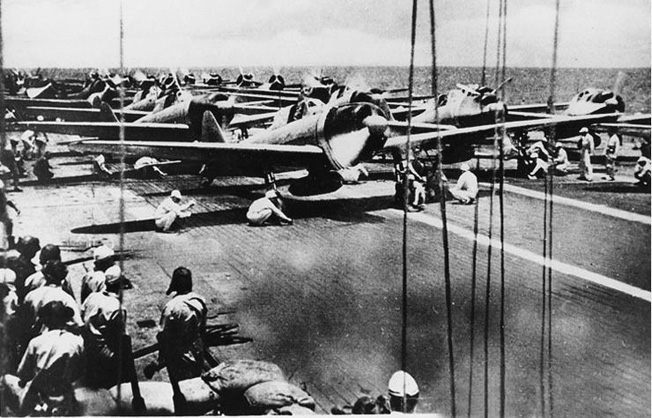
The Vals came straight at Enterprise. Captain Osborne B. Hardison ordered the rudder over full to spoil their aim, holding his helmet with his left hand as he stared straight up at the diving aircraft. South Dakota kept pace with the carrier, matching Enterprise’s every turn and putting up a roaring barrage at the enemy. One or two of the bombers were literally blown apart by the sheer volume of gunfire.
But, as had been the case with Hornet earlier, there were too many Japanese planes, and their pilots were too determined. The ship’s executive officer, John Crommelin, standing on the bridge close to Captain Hardison, watched one particular Val push over into her dive. To no one in particular, he calmly announced, “I think that son of a bitch is going to get us.”
It was a prescient observation. The Val’s 550-pound bomb hit the forward flight deck at 10:17, punched through the forecastle deck overhanging the sea, and exited the ship’s hull before exploding in the open air, just above the water and close to the port bow. Shrapnel sprayed the port side. The explosion blew a parked SBD over the side along with a sailor who was manning the twin .30-caliber guns in the rear seat. The deck crew pushed another SBD over the side. It had caught fire, and its 500-pound bomb was in danger of going off.
Less than a minute later, a second bomb hit. It landed just aft of the forward elevator and broke in two sections. The rear half penetrated the flight deck and exploded in the hangar below, destroying or badly damaging several planes. The heavier forward end went through two more decks before detonating, killing 40 men instantly. Several small fires were set in the officers’ quarters, sending dense smoke into the hangar deck and out through the hole above it.
A third bomb exploded in the water about 10 feet from Enterprise’s starboard side at 10:19. The concussion shook the carrier the full length of her 800 feet, violently enough to spill mercury from the master gyroscope, crack open a fuel tank, jar machinery and equipment from their foundations, and rotate the entire foremast one-half inch, which threw every antenna mounted on it completely out of alignment. Just about every man standing was knocked off his feet, and another SBD was blown overboard.
A Third Suicide Attack
In spite of everything, Enterprise still maintained 27 knots, although she was leaking a trail of fuel oil from her ruptured tank. Fire control worked hard to put out the fires around No. 1 elevator. The wounded were also tended in the battle dressing stations. Captain Hardison gave permission to counterflood, so that the list to starboard caused by the near miss could be corrected. Of the 19 Vals that had taken off, 10 had been shot down and two others ditched.
About 15 minutes after the last Val made its attack, Enterprise’s radar picked up another group of incoming enemy planes, 16 Kates from Zuikaku. These were supposed to have arrived at the same time as the Vals but had been delayed during the reloading of their torpedoes. Now they appeared off Enterprise’s bows in two groups.
Captain Hardison held his course, waiting to see which group would drop its torpedoes first and hoping that antiaircraft fire would take its toll on the enemy planes. The Kates came in low, and four of the 16 were disposed of before the pilots could get within range for an effective drop. The five remaining Kates made their drops on Enterprise’s starboard side and turned away. Captain Hardison ordered right full rudder. Enterprise’s bow swung to the right until it was running parallel with the bubbling wakes. The torpedoes passed along the carrier’s port side, about 30 feet away, on a reciprocal course. Five more Kates tried to get into position on Enterprise’s port side, but Hardison kept turning until the carrier’s narrow stern was the best target the torpedo planes could hope for. Two dropped their torpedoes in desperation; both missed. The other three were shot down by antiaircraft fire.
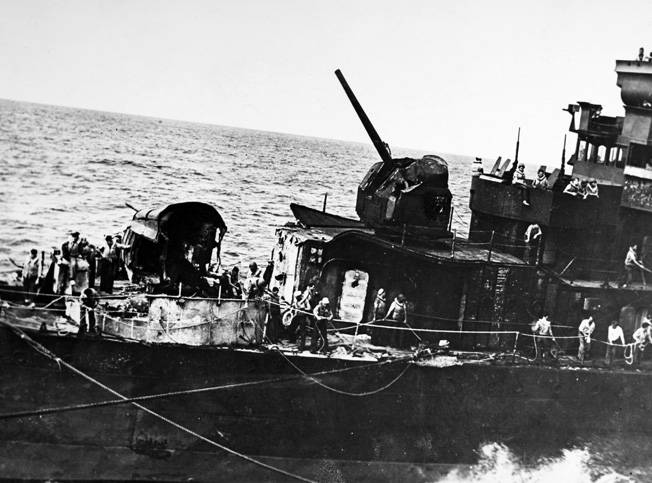
One of the Kates, on fire and smoking, deliberately crashed into the destroyer Smith at 10:48. The plane hit the forward five-inch mount, and flames from burning gasoline covered the bridge. Attempts to contain the fires were hindered by a large explosion, which was probably the Kate’s torpedo warhead detonating. The destroyer’s speed was unimpaired, and the captain decided to take up position directly astern of South Dakota. The battleship’s wake helped put out the fires. It was the third suicide attack of the morning.
Ace Pilot Stanley “Swede” Vejtasa
Of the 16 Kates, nine had been shot down and another ditched. The attack might have been a lot more successful if it had not been for Enterprise fighter pilot Lieutenant Stanley W. “Swede” Vejtasa and his wingman, Lieutenant Dave Harris. Vejtasa had already accounted for a Val before it could dive on Hornet and was credited with destroying a second Val after its pilot had dropped its bomb. As the Kates were approaching Enterprise, Vejtasa immediately caught sight of them.
Vejtasa and Harris made a side approach on the nearest Kates. The torpedo bombers had already begun their runs at Enterprise when Vejtasa and Harris made their attack. Each pilot blew up a Kate with his six .50-caliber machine guns and used his speed to overtake a three-plane formation just as it flew into a cloud bank. The Americans became separated in the clouds, but Vejtasa managed to keep the enemy planes in sight. One at a time, he flew close behind his intended target, fired a short burst, and watched the Kate catch fire and fall away. All three planes were disposed of in a matter of a few minutes.
Vejtasa saw another Kate above and to his left. He pulled his nose up and fired a burst at his target, but he did not think he scored any hits. The Kate dove out of the clouds, but Vejtasa did not follow. It was too high to make an effective drop, so Vejtasa decided to leave it to the antiaircraft gunners. This was the plane that crashed into the destroyer Smith.
Almost out of ammunition by this time, Vejtasa fired his remaining rounds at a Kate that was withdrawing after dropping its torpedo. The Kate was low on the water, trying to avoid antiaircraft fire. Vejtasa dove on it and sent the plane spinning into the sea. This was his seventh enemy aircraft destroyed that morning— five Kates and two Vals.
Enterprise had been saved by the seamanship of Captain Hardison, whose skill in maneuvering frustrated the aim of every Japanese pilot. But Swede Vejtasa prevented five additional Kate pilots from dropping their torpedoes at Enterprise, and Harris shot down a sixth.
Junyo‘s First Wave
Following the departure of the Kates, Enterprise’s crew began cleaning up the damage from the bomb hits. At about 11:15, the carrier began taking her aircraft aboard. In spite of the damage to the flight deck that made landing hazardous, several planes made their approach from astern, dropped onto the deck, and taxied forward out of the way. South Dakota’s radar picked up yet another incoming Japanese air strike. The other pilots rolled up their wheels and banked away until the attack ended.
This was the first wave from Junyo, 17 Vals and 12 Zeroes. The leader of the Japanese fighter escort, Lieutenant Yoshio Shiga, spotted a large carrier and pushed his throttle forward. His orders were to stay with the bombers and leave the Wildcats alone until they attacked the Vals. He followed the lead bomber in its dive on Enterprise, but lost him. The Val had dive brakes to slow its rate of descent, but the Zero had no flaps, and Shiga had to go into a tight loop to keep from overshooting. Several of the Vals dropped their bombs, but Shiga saw all of them miss.
Antiaircraft fire destroyed eight Vals, while Enterprise turned sharply to starboard to evade the falling bombs. One bomb bounced off the carrier’s hull as she heeled over in the turn and exploded about eight feet away. For the second time that morning, the entire ship whiplashed from the concussion of a near-miss. And once again, everyone was knocked to the deck. Two compartments below the waterline were opened to the sea. The main antenna was shaken, knocking out the carrier’s search radar. The forward elevator, which had already been damaged, was now jammed in the up position.
Some of Junyo’s Vals decided to leave Enterprise alone and attack her escorts instead. South Dakota became the target for several dive- bombers. Most of the pilots missed, sending columns of water spouting higher than the battleship’s masts, but one of the pilots hit his mark. A 550-pound bomb struck Number 1 turret and exploded. The turret was so heavily armoured that its crew, except for an officer at the periscope, were not even aware of the fact that they had been hit. Fragments killed two men and injured about 50, including Captain Thomas L. Gatch, the battleship’s captain. While steering was shifted to Battle 2, the executive officer’s station aft, the telephone went dead and South Dakota, temporarily out of control, headed straight for Enterprise. Captain Hardison saw what was happening and quickly maneuvered his ship safely out of the way.
San Juan was also hit, but did not get off quite so easily. An armor-piercing bomb punched through her hull about three feet above the waterline and exited through the ship’s bottom before exploding. The burst flooded three or four compartments and left the rudder jammed full right. Before steering was restored, which took about 13 minutes but seemed a lot longer, the cruiser steamed in a circle.
Bringing the Enterprise‘s Radio Online
Eleven of the 17 Vals never returned to Junyo. All 12 Zeroes returned, however, with inflated claims of a dozen American planes destroyed. Inflated reports were not just limited to the Japanese, though. Gun crews aboard South Dakota claimed to have shot down 26 enemy aircraft—nine more than the actual number of Vals that had been launched.
As the Japanese left the area, Enterprise resumed taking her aircraft aboard. Fighters and dive-bombers were given precedence over the longer-range Avengers, which had a much greater fuel capacity, but several planes had to ditch. The jammed forward elevator slowed the landing process, since it made shifting planes down to the hangar deck impossible. The flight deck, packed with aircraft, quickly became overcrowded. To make matters even worse, Number 2 elevator was temporarily jammed in the down position, which left a gaping hole in the flight deck amidships. Incoming pilots were forced to taxi slowly around the hole on their way forward.
By early afternoon, Enterprise’s deck was so jammed with aircraft, including orphans from Hornet, that 13 SBDs were sent off to a land base at Espiritu Santo. Also, several planes were lowered to the hangar deck via the after Number 3 elevator, which made just enough room to get the last Avenger aboard.
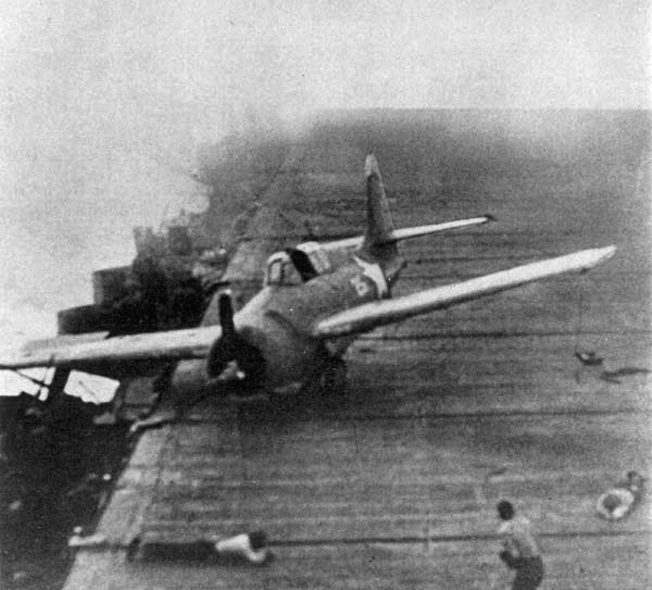
While escorting destroyers picked up the crewmen from ditched aircraft, Enterprise’s crew began to repair the damage that had been done that morning. The radar officer, Lieutenant Brad Williams, climbed the mast with his toolbox and actually began repairing the radar while antiaircraft gunners below him were still firing at the diving Vals. The bomb that bounced off Enterprise’s starboard side left him deafened for weeks. He could actually see it as it fell. It came so close that it looked spherical, like a ball, because he could see only its rounded forward end.
Williams tried to repair the antenna and its drive motor with one hand gripping the antenna, but he quickly found that he needed both hands for the job. So he tied himself to the aerial, which allowed him to use two hands. He worked as quickly as he could, but he was slowed considerably by the soot and salt that corroded the bolts and kept them from turning. It took quite a while, but Williams finally got everything to work. As soon as the radar screen lit up, an officer in the radar compartment switched on the antenna’s motor, and the radar antenna resumed its 360-degree sweep.
Unfortunately, Brad Williams was still tied to it. He also began making 360-degree sweeps. His angry shouts of protest were drowned out by the guns and the noise of battle. After a few minutes of this, an officer on the bridge caught sight of Williams and quickly came to the conclusion that his majestic sweeps around the mainmast were purely unintentional. Except for his hearing, which eventually came back, Williams was no worse for his adventure, and Enterprise could scan the horizon for enemy aircraft again.
Abandoning the Hornet
While Enterprise’s prospects were looking brighter as the day went on, Hornet’s difficulties showed no signs of ending. She was listing, still on fire, and dead in the water, although the fires had been brought under control. At 11:45, her escorting destroyers Russell and Hughes removed all wounded and nonessential crewmen, about 875 men. Some of the remaining crewmen dragged a two-inch towing cable out of Hornet’s after elevator well and transferred it to Northampton. The line held, and the carrier was being pulled along at a speed of three knots. At the same time, engineers were on the verge of getting Hornet’s engines to begin supplying power. But at 2:55, another incoming air strike was detected.
The attack consisted of seven Kates and eight Zeroes from Junyo. By this time, after losing nearly 100 aircraft in the course of their morning offensives, the Japanese did not have many planes to send after Hornet—of the 15 launched from Junyo, five were her own and 10 belonged to Shokaku. But Hornet had no aircraft at all for a CAP since all had joined Enterprise, and the antiaircraft cruiser Juneau left for Enterprise’s group because of misunderstood orders. The carrier was an easy target for any planes the Japanese could scrape together.
Two of the Kates concentrated on Northampton. For the second time that day, the cruiser cut the tow line. The captain ordered a hard left turn, presenting the cruiser’s stern to the incoming Japanese aircraft. Both Kates dropped their torpedoes, and both missed.
The other five Kates went after Hornet. Two of them went into the sea with huge splashes, while two Zeroes were also shot down and three others never made it back to their carrier. However, Hornet was too easy a target, and it seems odd that only one torpedo hit her. At 3:23, it struck the starboard side just aft of the first hit. The damage done by this torpedo made restoring power a lost cause and increased the list to starboard to 14 degrees. The captain ordered the crew to stand by to abandon ship.
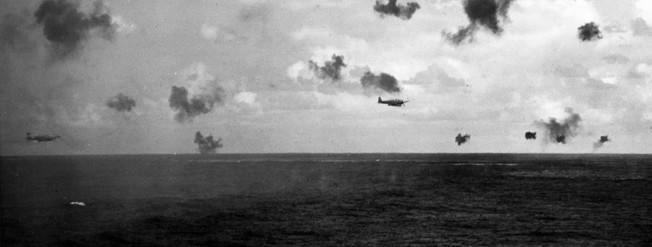
At 3:40, two more Vals arrived. Their bombs missed. Fifteen minutes later, six Kates, flying in a perfect V formation, made a horizontal bombing attack on the listing carrier. One scored a hit on the starboard after corner of the flight deck, inflicting little additional damage.
By this time, the flight deck had an 18-degree list, and the crew was having a hard time standing upright. The men began abandoning ship in an orderly manner. Captain Mason was the last to leave at 4:27. Just over half an hour later, four more Vals appeared with an escort of six Zeroes. With no CAP and only moderate antiaircraft fire to disturb their aim, the Vals scored one hit. The bomb exploded on the hangar deck and started a small fire. Soon after this last attack of the day, rescue operations came to an end. The number of dead and fatally wounded came to 118 officers and men.
Hornet had not been home to her crew for years and years, the way some of the battleships sunk at Pearl Harbor had been. The aircraft carrier was barely a year old, commissioned on October 20, 1941. But most of the men had been through a lot of war with their ship, including launching the Doolittle Raid on Tokyo in April and playing a major role in the Battle of Midway less than two months later. They knew exactly what Japanese carrier-based aircraft could do, having seen their sister ship Yorktown sunk at Midway. Some of the men broke down and cried as they sailed off aboard escort destroyers and left Hornet behind, listing and abandoned.
A Mutual Withdrawal
Admiral Halsey had ordered a general withdrawal at 3:50. Japanese surface forces consisting of battleships and cruisers were advancing toward Hornet. There was now no alternative to destroying the carrier, which was in a hopeless predicament. Captain Murray assigned the destroyer Mustin the task of sinking Hornet, while the rest of the group left the area at high speed. Mustin fired eight torpedoes at the carrier, but American torpedoes were not of the highest quality at this stage of the war. Of the eight, one exploded prematurely, two ran erratically, and five hit but only three exploded. The destroyer Anderson was next, hitting her target with six of eight torpedoes. Hornet still remained afloat.
Both destroyers were now out of torpedoes and had to resort to using their five-inch guns. Between the two of them, Mustin and Anderson hit the carrier more than 300 times. During this gunnery exercise, the radar operators of both ships were becoming increasingly aware of the presence of Japanese scouting planes that had been launched from approaching cruisers. By 8:40 pm, Hornet was burning furiously. Satisfied that the carrier was finished, even though she had not sunk, the two destroyers left the area at top speed. Flares from Japanese float planes hurried them on their way.
At 9:20, a Japanese signal was decoded which instructed the oncoming forces to capture and tow the derelict carrier, which was the last thing in the world the Americans wanted or expected. When the destroyers Akigumo and Makikumo arrived on the scene just 20 minutes after Anderson and Mustin had departed, they quickly discovered that the burning Hornet was in no condition to be towed. Instead, each destroyer fired two Long Lance torpedoes at the carrier. All four hit. At 1:35 am, on October 27, 1942, Hornet finally rolled over and sank. The bottom was three miles down.
Except for a brief postlude as torpedo-carrying Catalinas from Espiritu Santo attacked and badly frightened Zuikaku and damaged the destroyer Teruzuki, the Battle of Santa Cruz was over. Admiral Yamamoto ordered Japanese naval forces north, to their anchorage at Truk, because of a fuel shortage that was becoming critical. American forces withdrew southward, toward Noumea. Throughout the trip, Enterprise’s construction and repair division worked to restore the carrier’s lights and power.
A Tactical Victory, A Strategic Loss
For the Japanese, the initial reaction was relief and elation. They had sunk an American aircraft carrier and had not lost any ships of their own. Soon, however, this outlook began to change.
“The battle was a tactical win, but a shattering strategic loss for Japan,” noted Admiral Nagumo, who was relieved of his command shortly after the battle and assigned to shore duty in Japan. “Considering the great superiority of our enemy’s industrial capacity, we must win every battle overwhelmingly. This last one, unfortunately, was not an overwhelming victory.”
The loss of Hornet did make Santa Cruz a tactical victory for Japanese forces. The U.S. Navy now had only one carrier, Enterprise, in the entire Pacific Theater, and she was badly damaged. Even though Admiral Nagumo’s fleet had not lost any ships, the victory was a costly one for Japan. Both Shokaku and Zuiho had also suffered severe damage and had to return to Japan for repairs. Zuiho returned to the fleet in January 1943. Shokaku was not fully repaired and restored until July 1943, when she was reunited with Zuikaku at Truk.
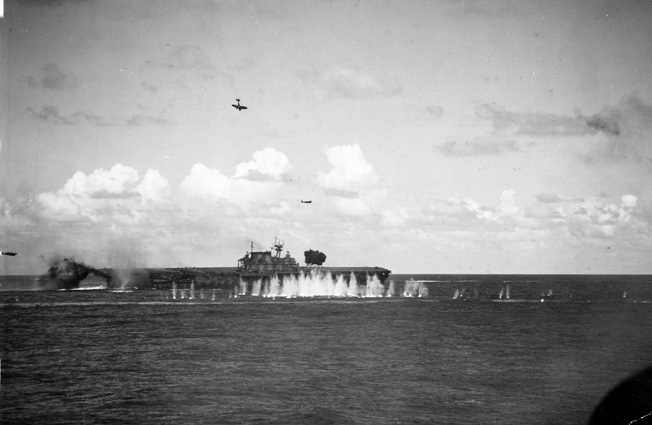
For the Japanese, the loss of two carriers for several months paled in comparison to the permanent loss of experienced pilots and aircrew. So many airmen were killed that the undamaged Zuikaku and Junyo also had to return to Japan. They did not have enough trained pilots, including senior squadron commanders, to carry on with operations. Of the 148 aircrew that were lost in the course of the battle, two were dive-bomber group leaders, three were torpedo squadron leaders, and 18 were section leaders. An overwhelming 40 percent of all torpedo bomber aircrew were lost, along with 39 percent of dive-bomber crews and 20 percent of fighter pilots. The skills of these men would never be matched by their replacements.
American fliers could not help but notice this decline in the quality of Japanese carrier aviators. An American destroyer commander noted that he could see “no diminution in the courage and daring of the individual pilot,” but he did note “a most marked decrease in skill” compared with the fliers he had seen at Coral Sea and Midway.
At the same time, American pilots were becoming better at their trade because of advanced training methods and equipment. They were learning to shoot better, how to put their bombs and torpedoes on their targets with better accuracy, and generally how to outperform their Japanese counterparts. Throughout the rest of the war, the tactics of American pilots would continue to improve while the quality of Japanese pilots declined. Aerial combat would become increasingly one-sided.
A New Hornet
Although Hornet would be missed, especially during the remainder of the Guadalcanal campaign, she was by no means irreplaceable. Soon after the battle, a story began making the rounds about two sailors talking to each other as they left the burning carrier. “Are you going to re-enlist?” one asked. The other replied, “Hell, yes—on the new Hornet.”
It is a nice story, although probably apocryphal, but it certainly turned out to have more than a ring of truth. A new Hornet was commissioned just over a year later, on November 29, 1943. She was an Essex-class fleet carrier. Between December 1942 and the end of the war, 19 Essex-class carriers were commissioned. Japan could not hope to produce warships at such a rate. “The Japanese Navy is different from the American Navy,” a Japanese admiral had pointed out earlier in the war. “If you lose one ship, it will take years to replace.” In short, the American Navy could afford to lose Hornet; the Japanese Navy could not replace its losses.
At Santa Cruz, Japan lost its strategic opportunity to deal the American Navy a decisive defeat. The industrial output of the United States was already becoming a factor; by 1943, it would make a Japanese victory in the Pacific impossible. After Santa Cruz, Japanese carriers would no longer play an offensive role in the Solomon Islands campaign. On the other hand, Enterprise was back in the Solomons area in early November, supplying Henderson Field on Guadalcanal with fighters, bombers, and torpedo planes. For the next month, she would be the only American aircraft carrier in the Pacific. The next time the crew of Enterprise saw another friendly carrier was in December, when Saratoga arrived at Noumea. On the hangar deck, Enterprise crewmen had posted a sign: “ENTERPRISE AGAINST JAPAN.”
The Guadalcanal campaign was a war of attrition that Japan had no chance of winning. After months of trying to retake the island and losing irreplaceable men and ships in the process, Admiral Yamamoto came to the same conclusion. All Japanese troops were withdrawn from Guadalcanal in February 1943.
An American writer summed up the impact of the Battle of Santa Cruz Islands: “Santa Cruz was a Japanese victory. That victory cost Japan the last best hope to win the war.”
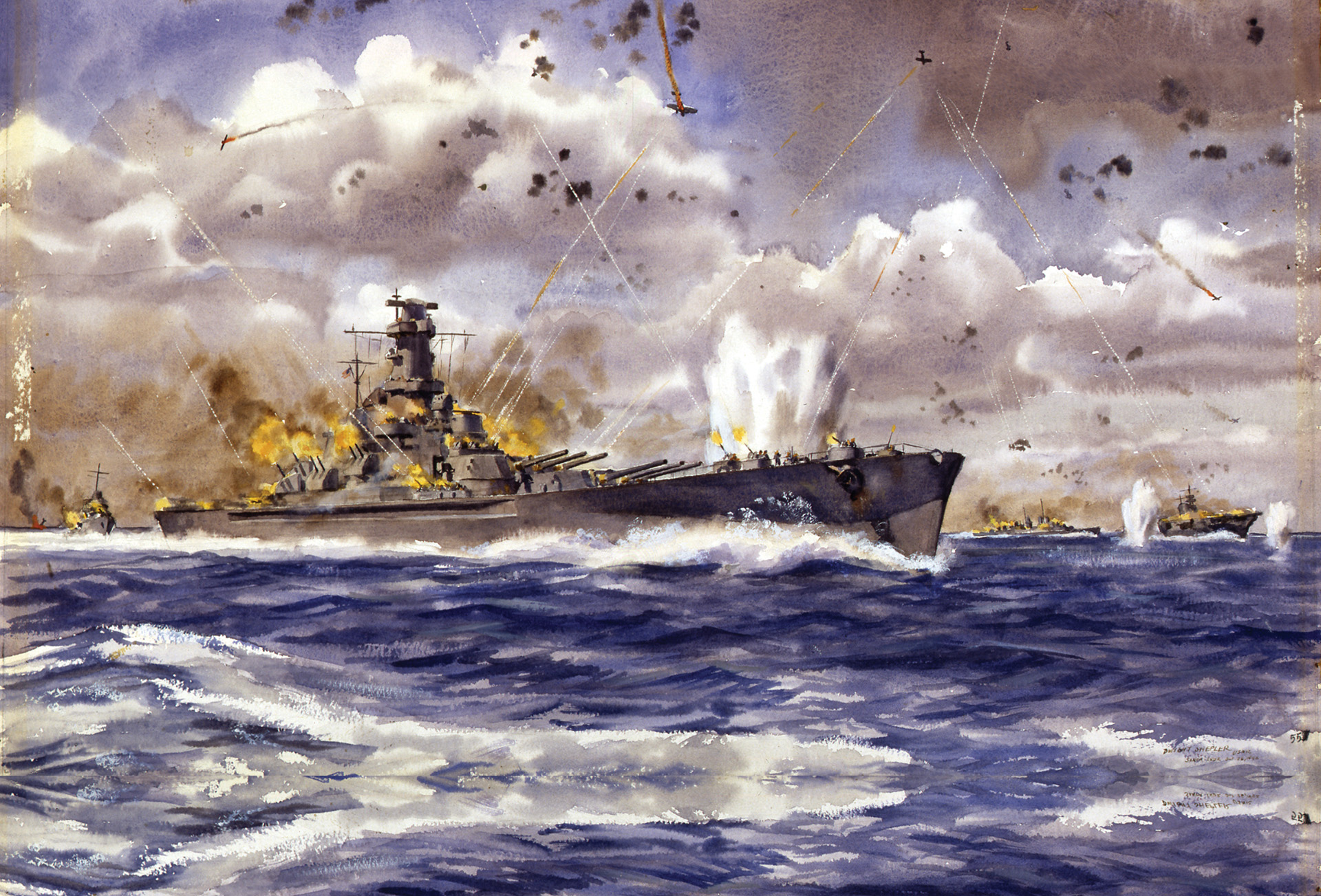

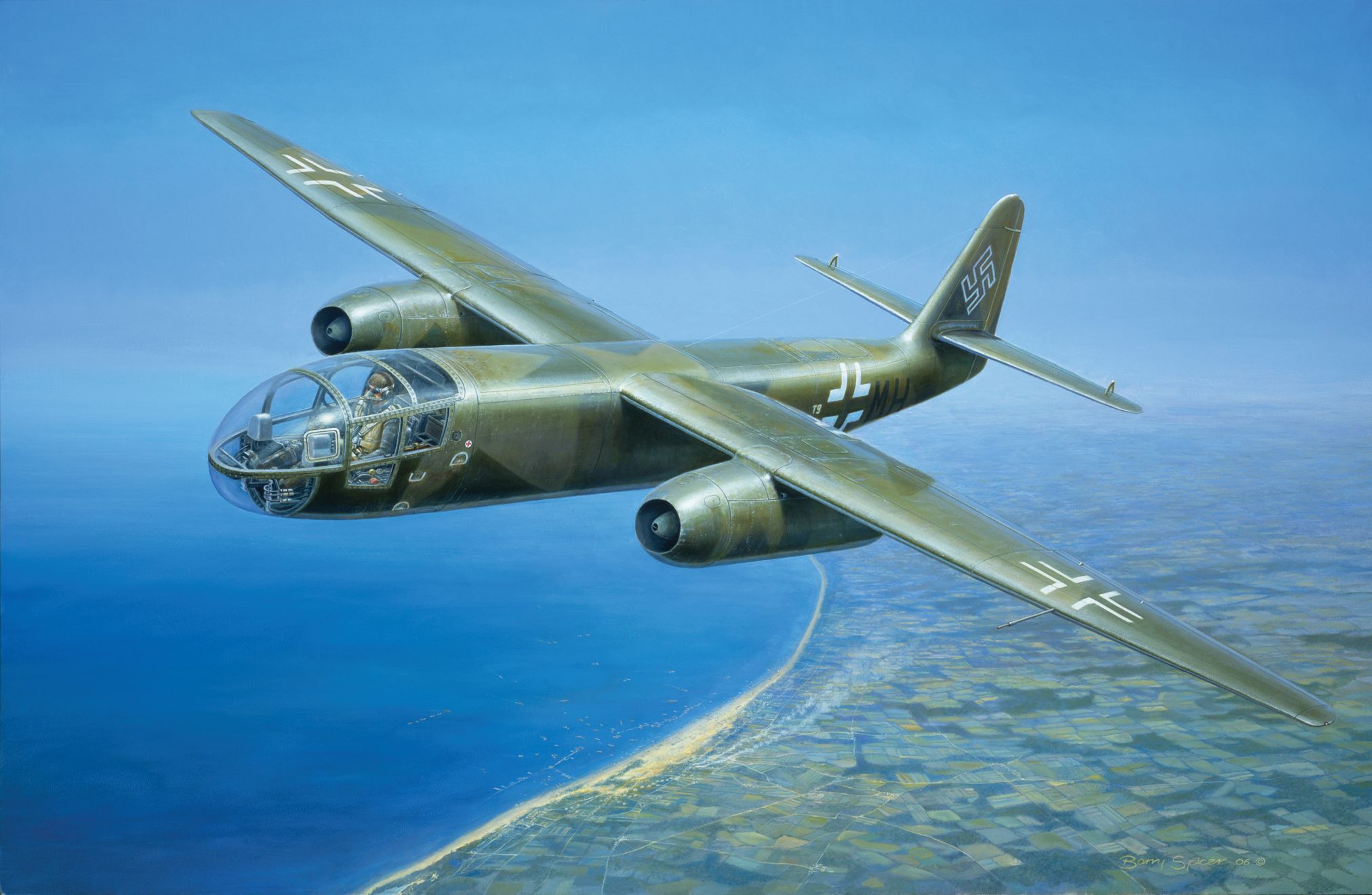
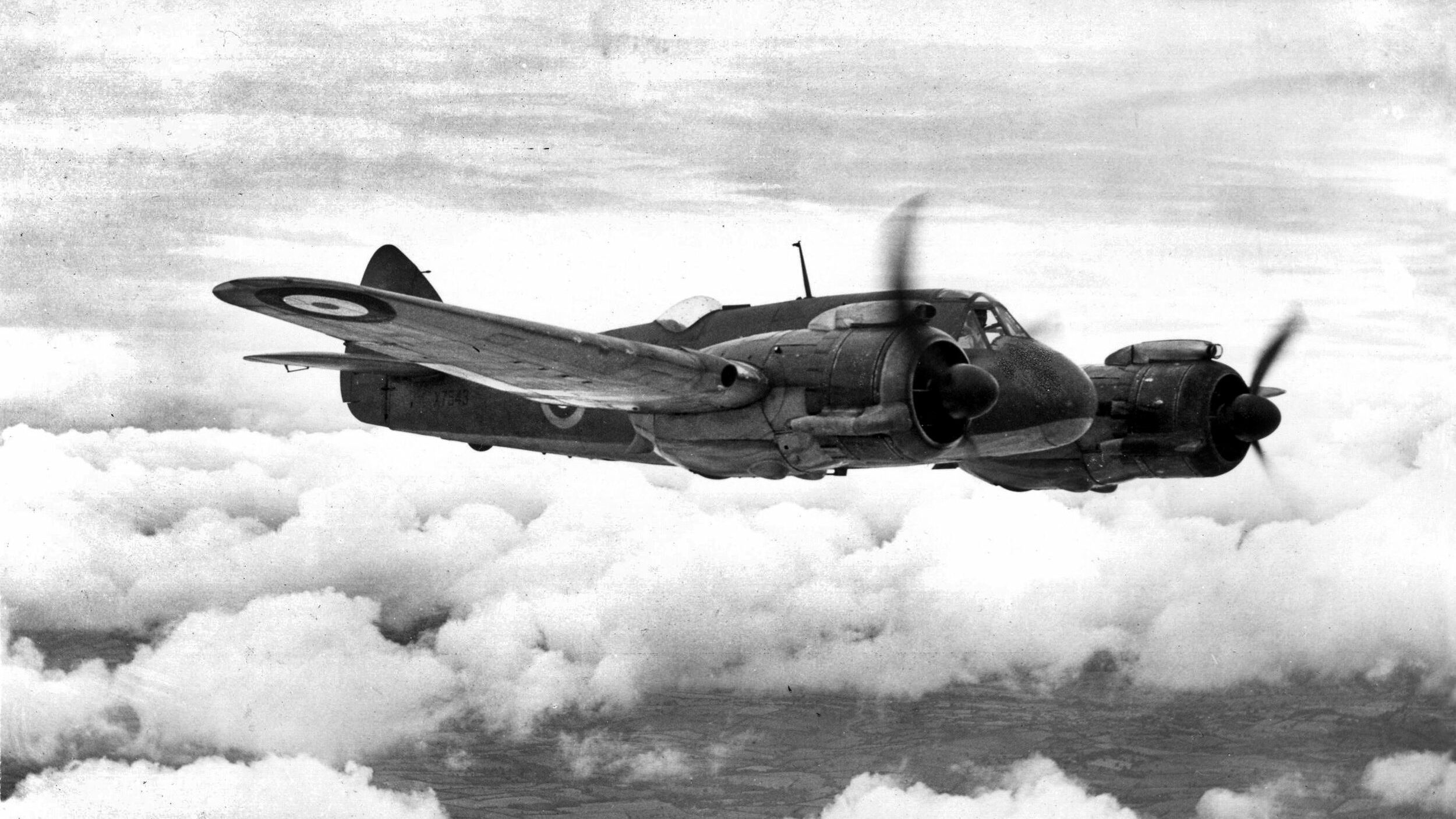
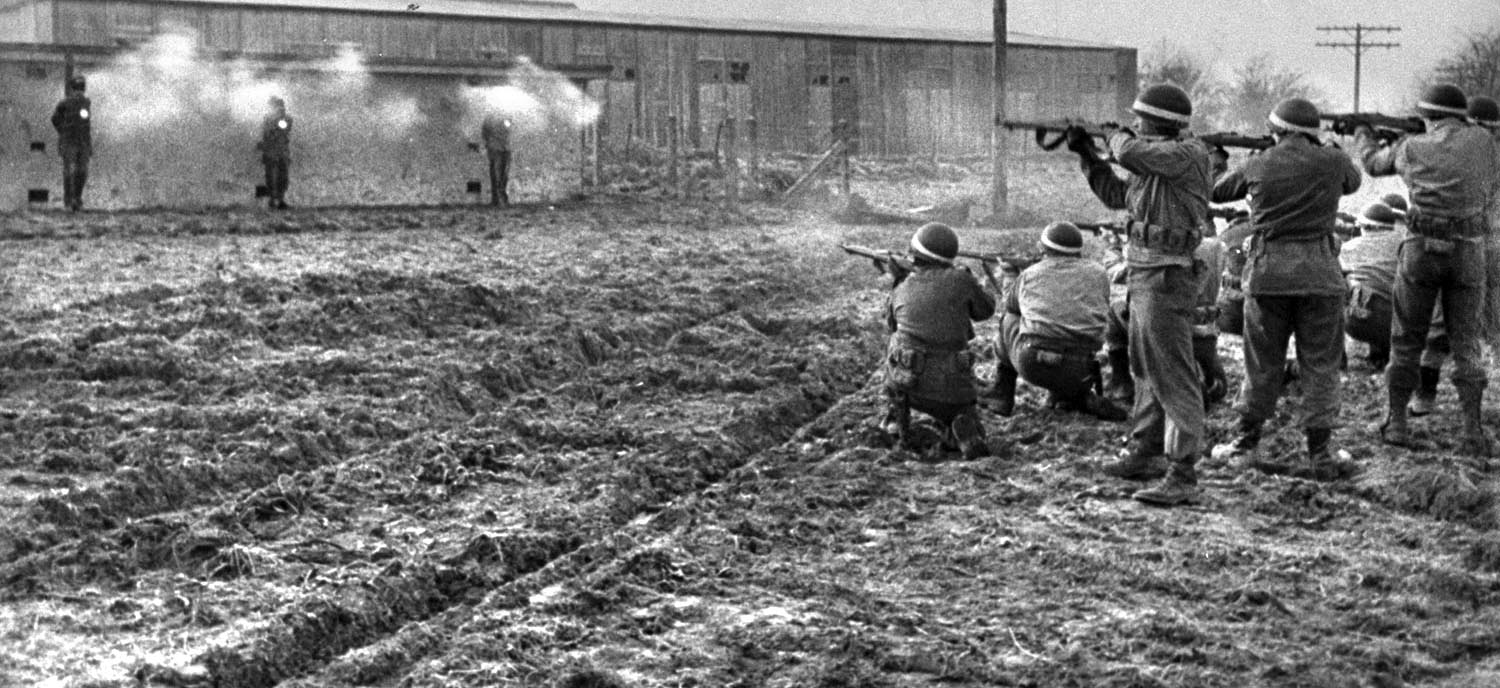
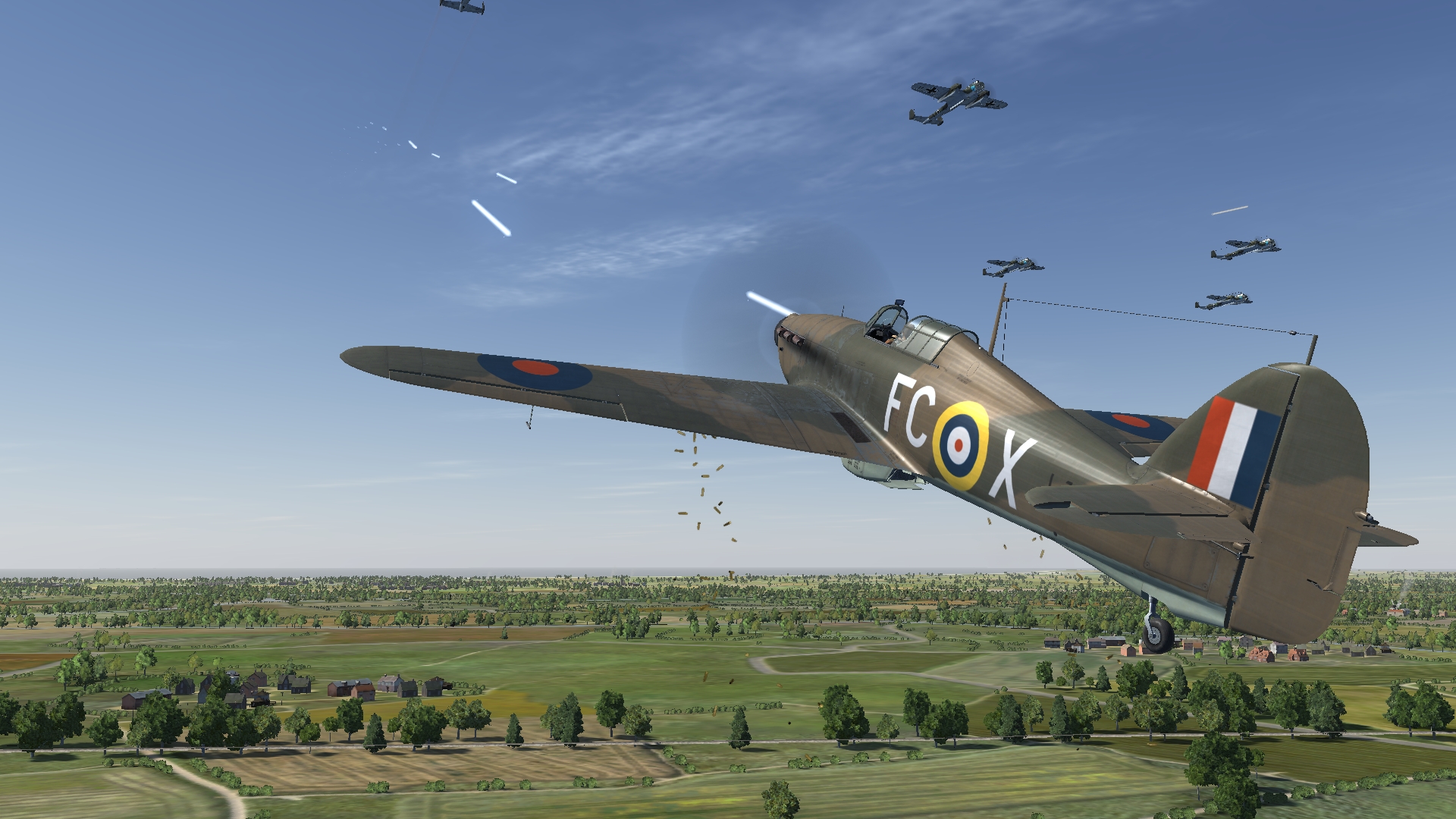
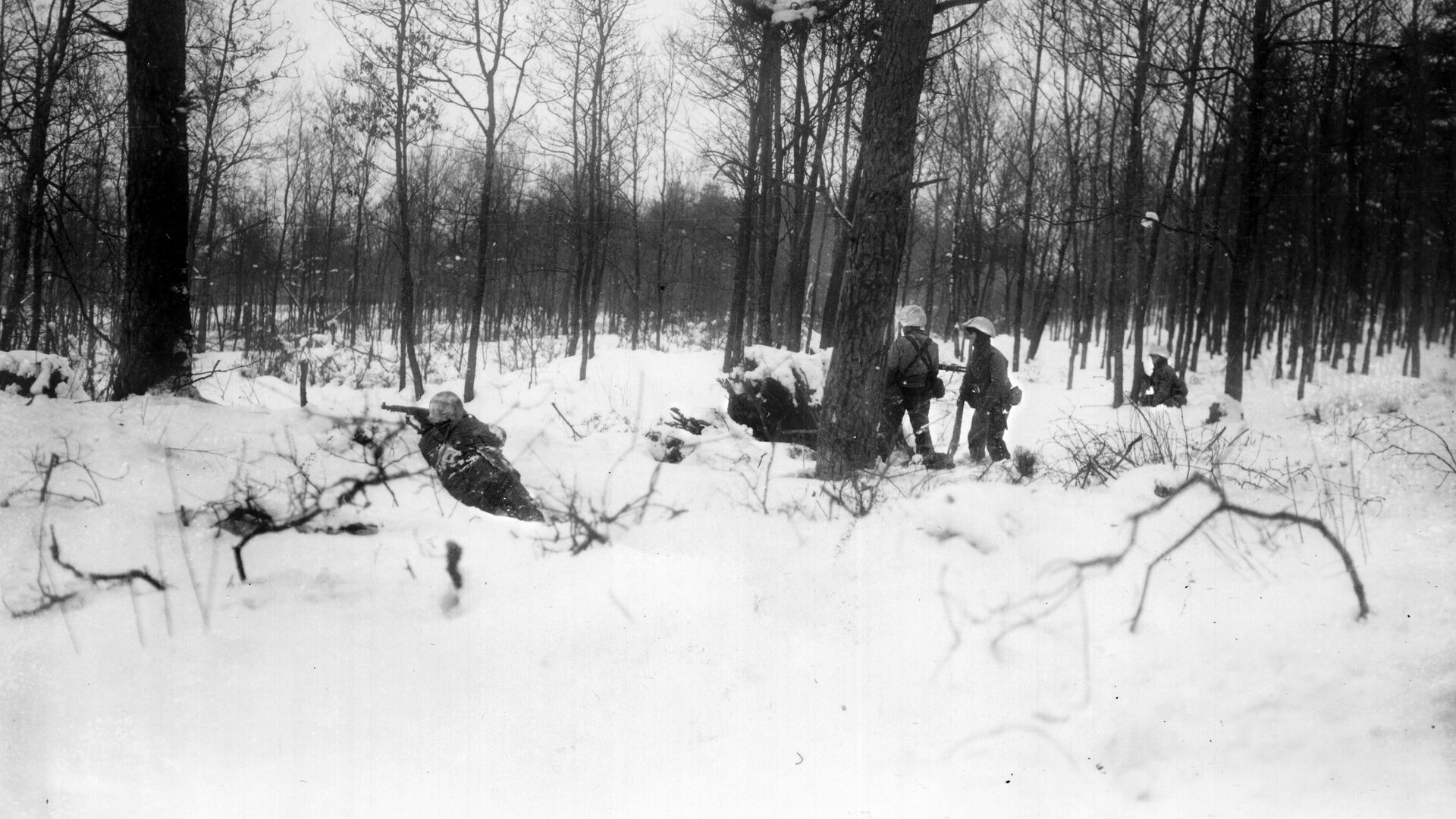
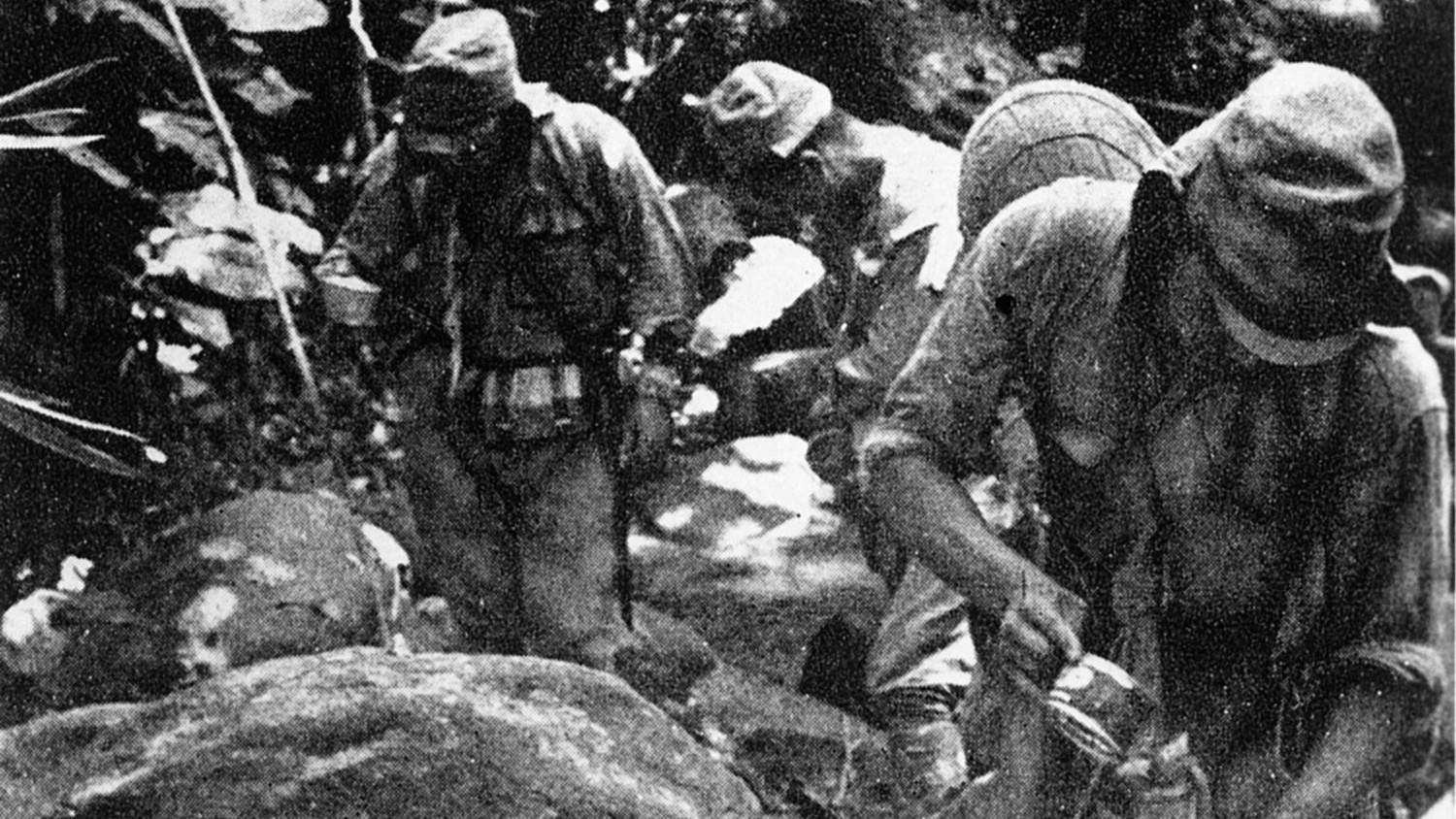
Join The Conversation
Comments